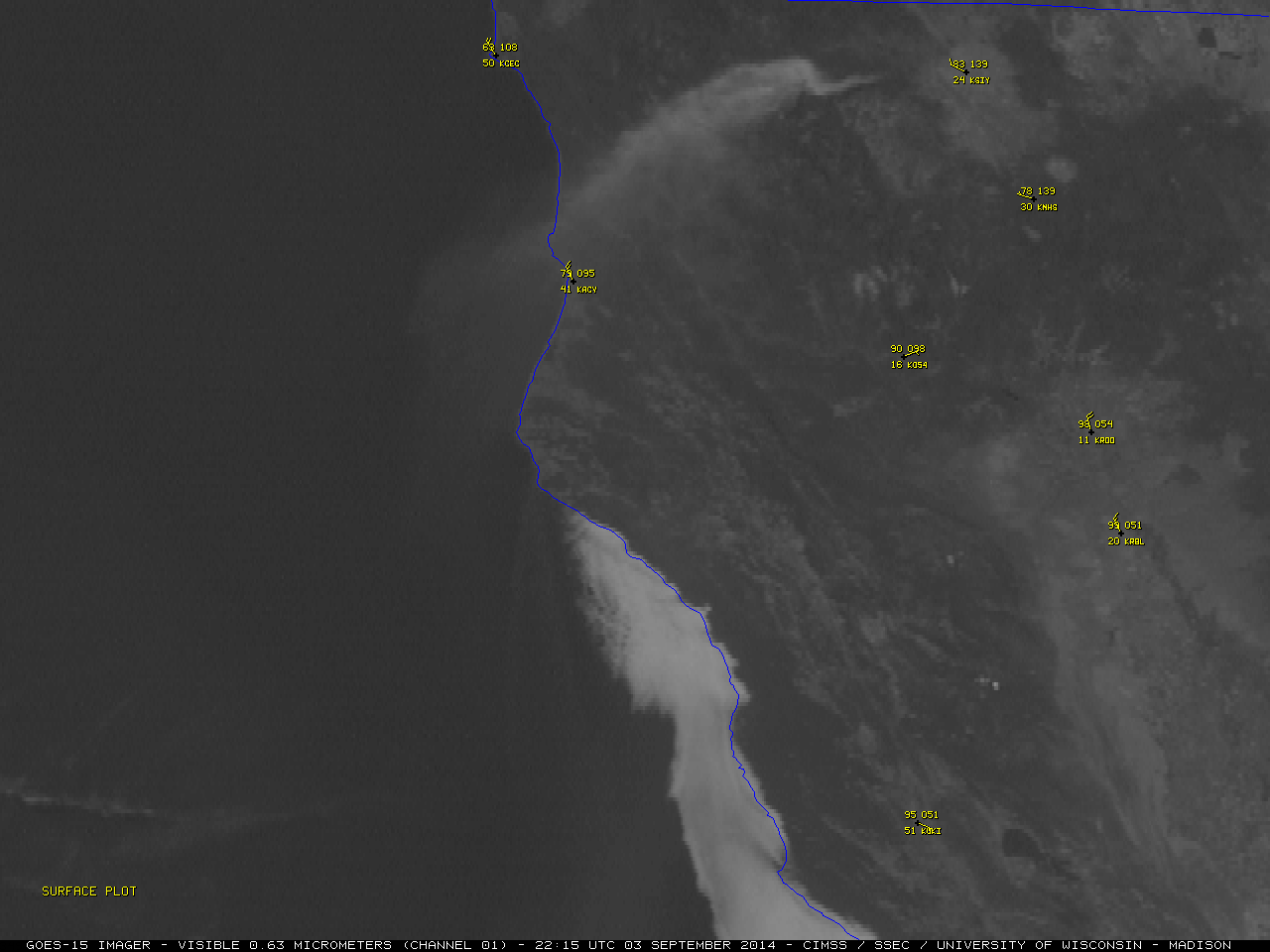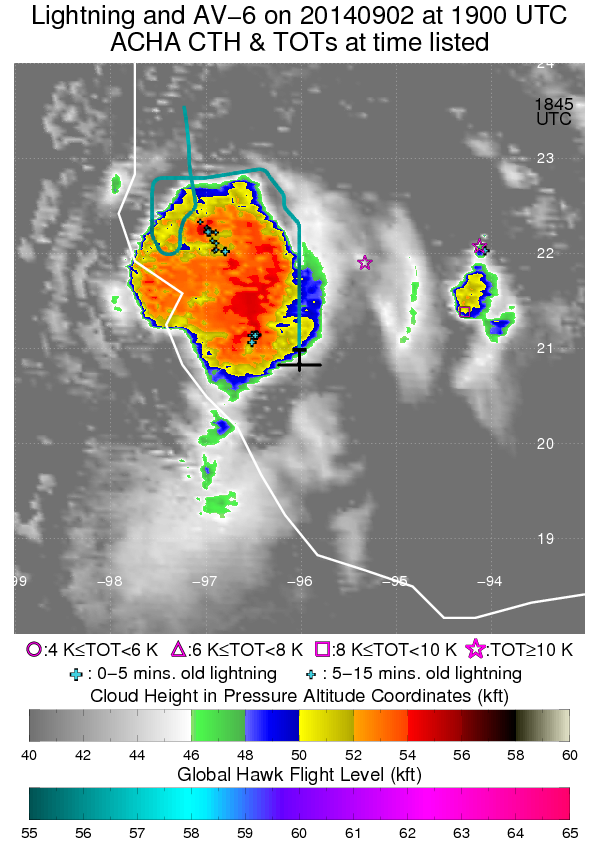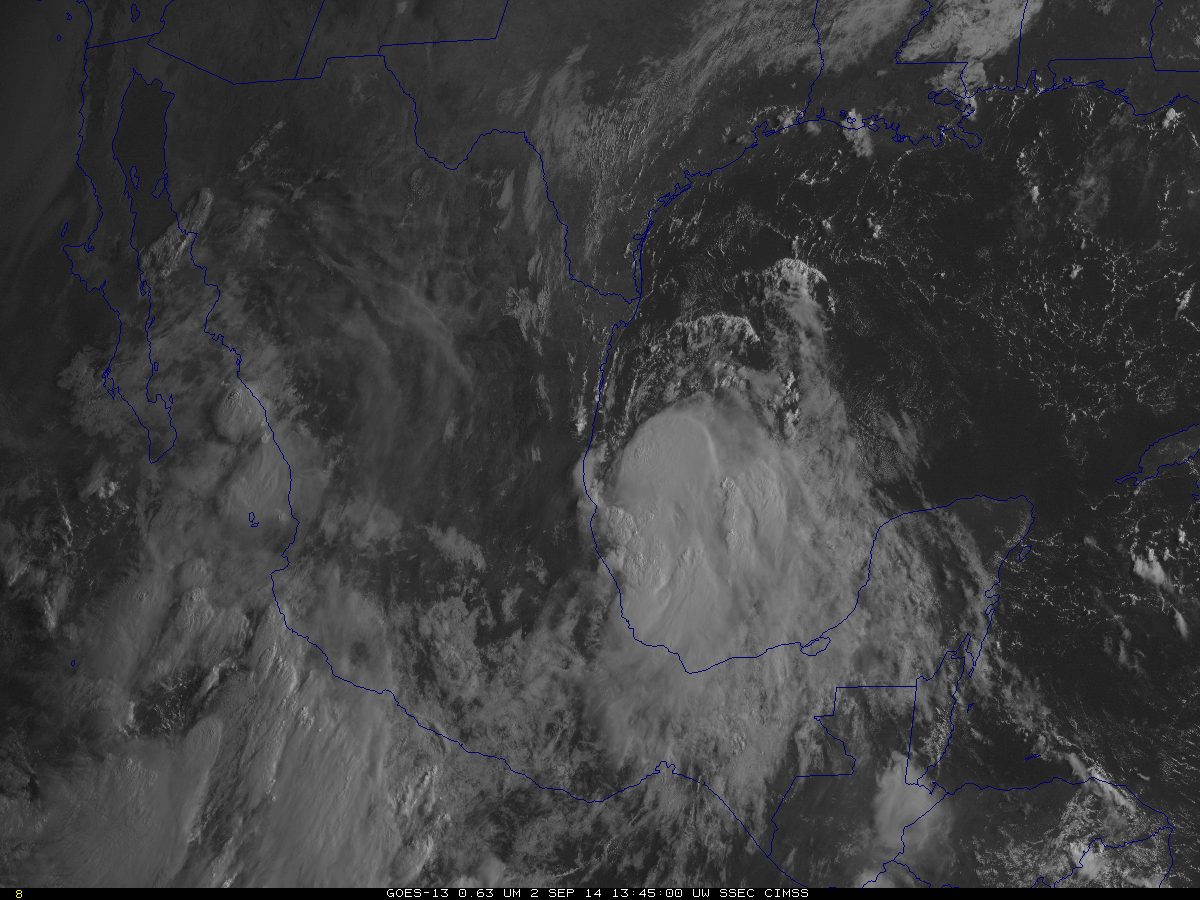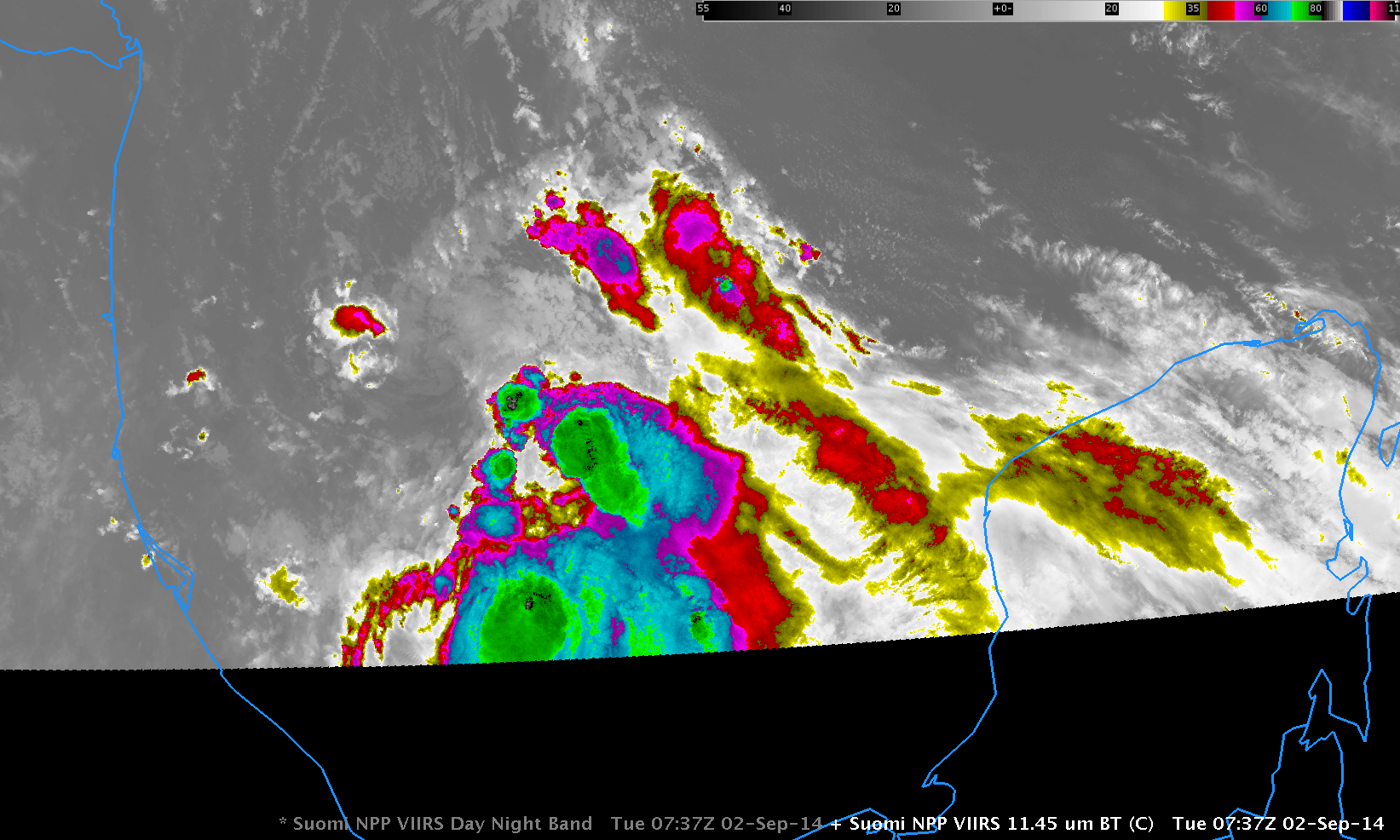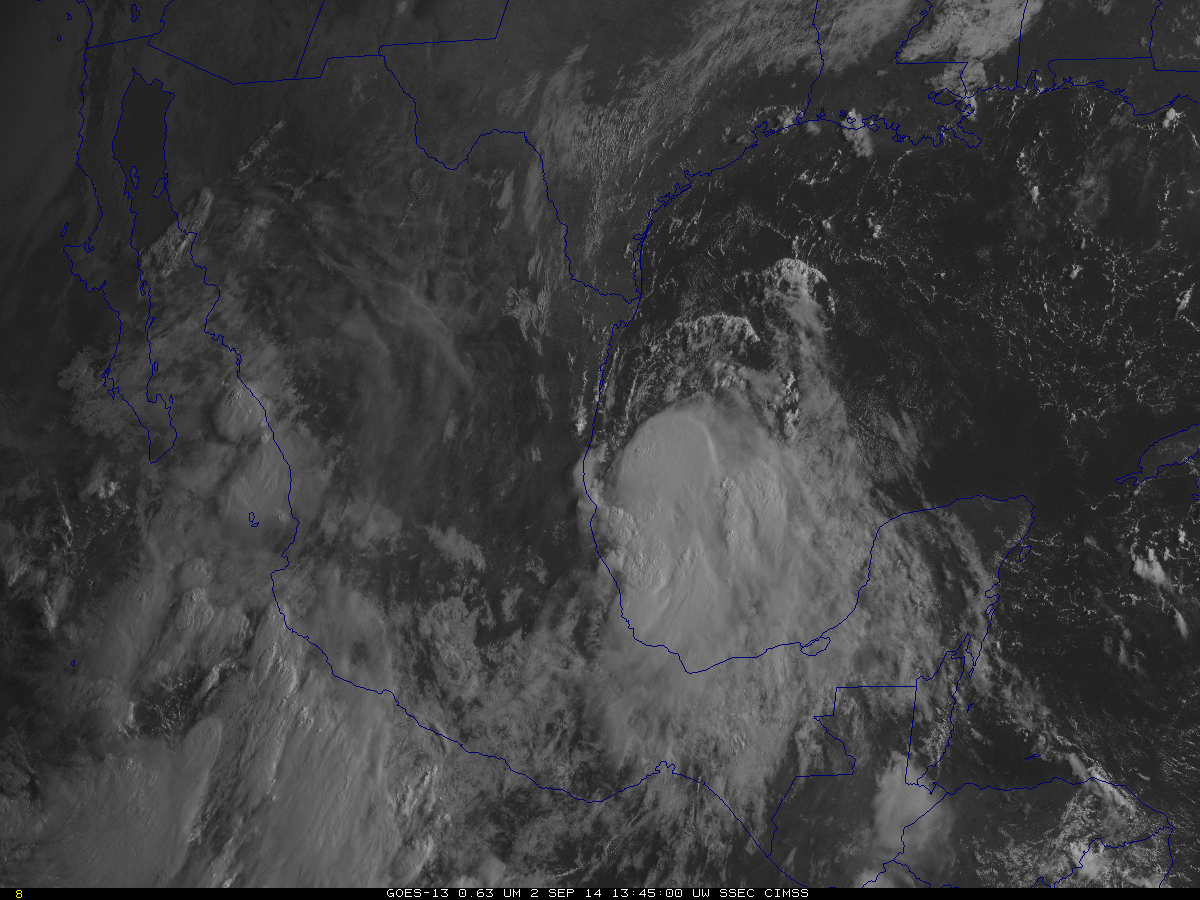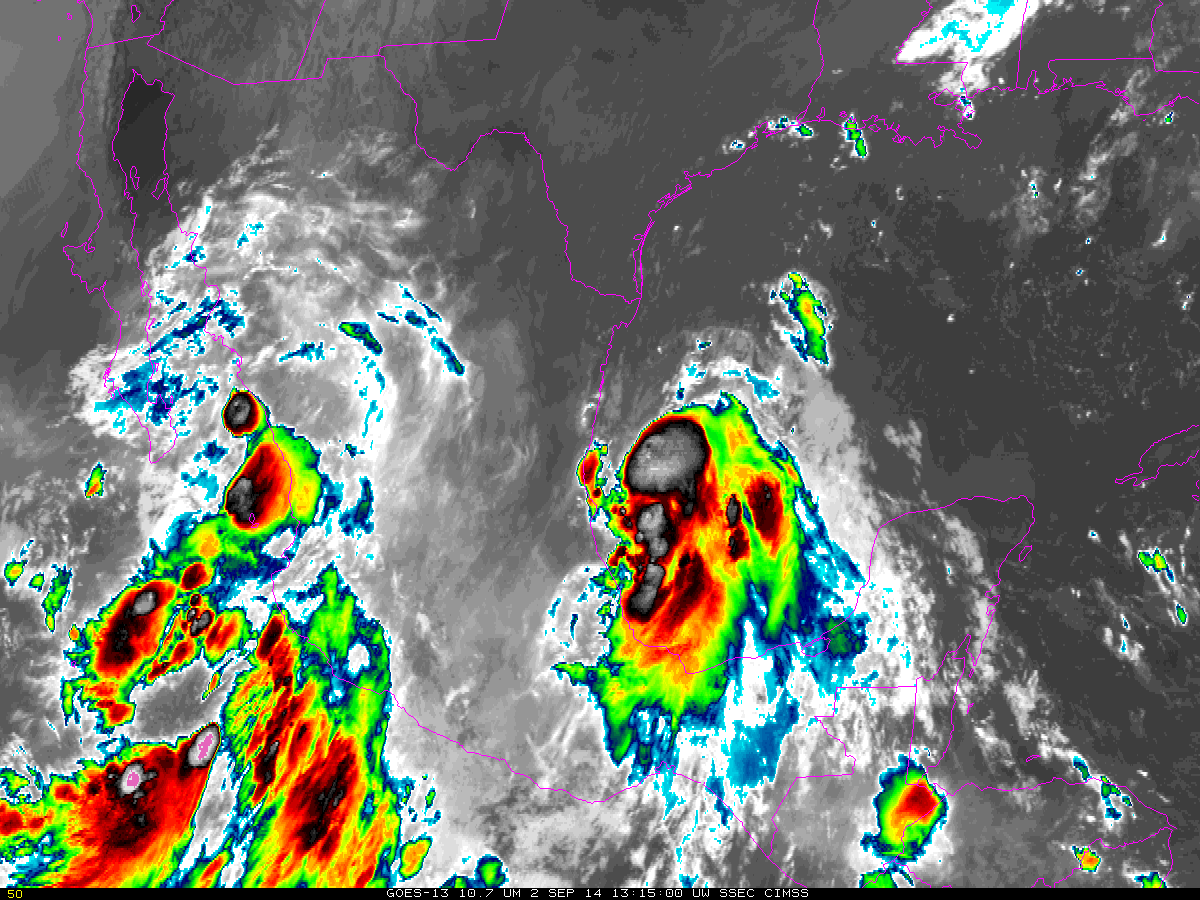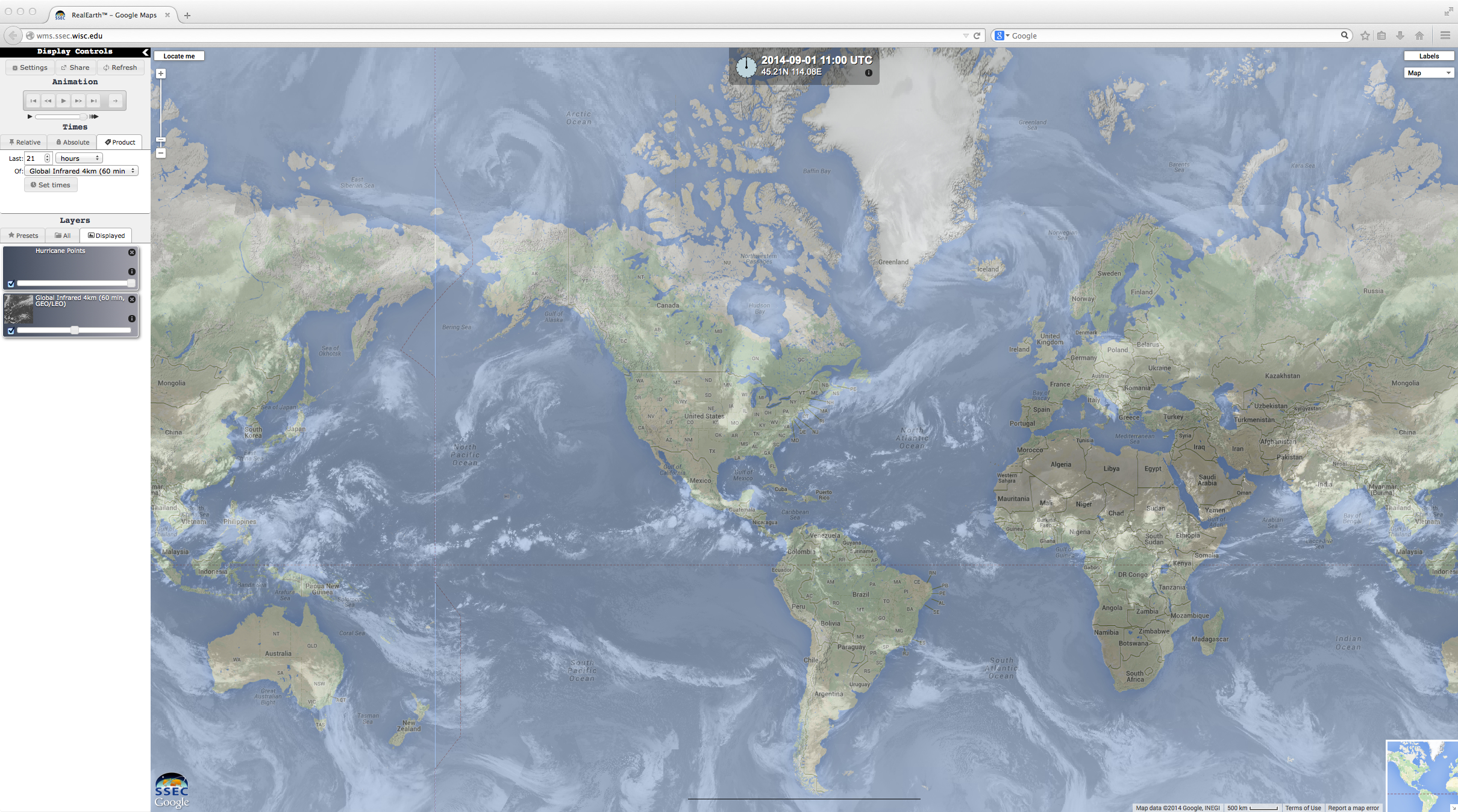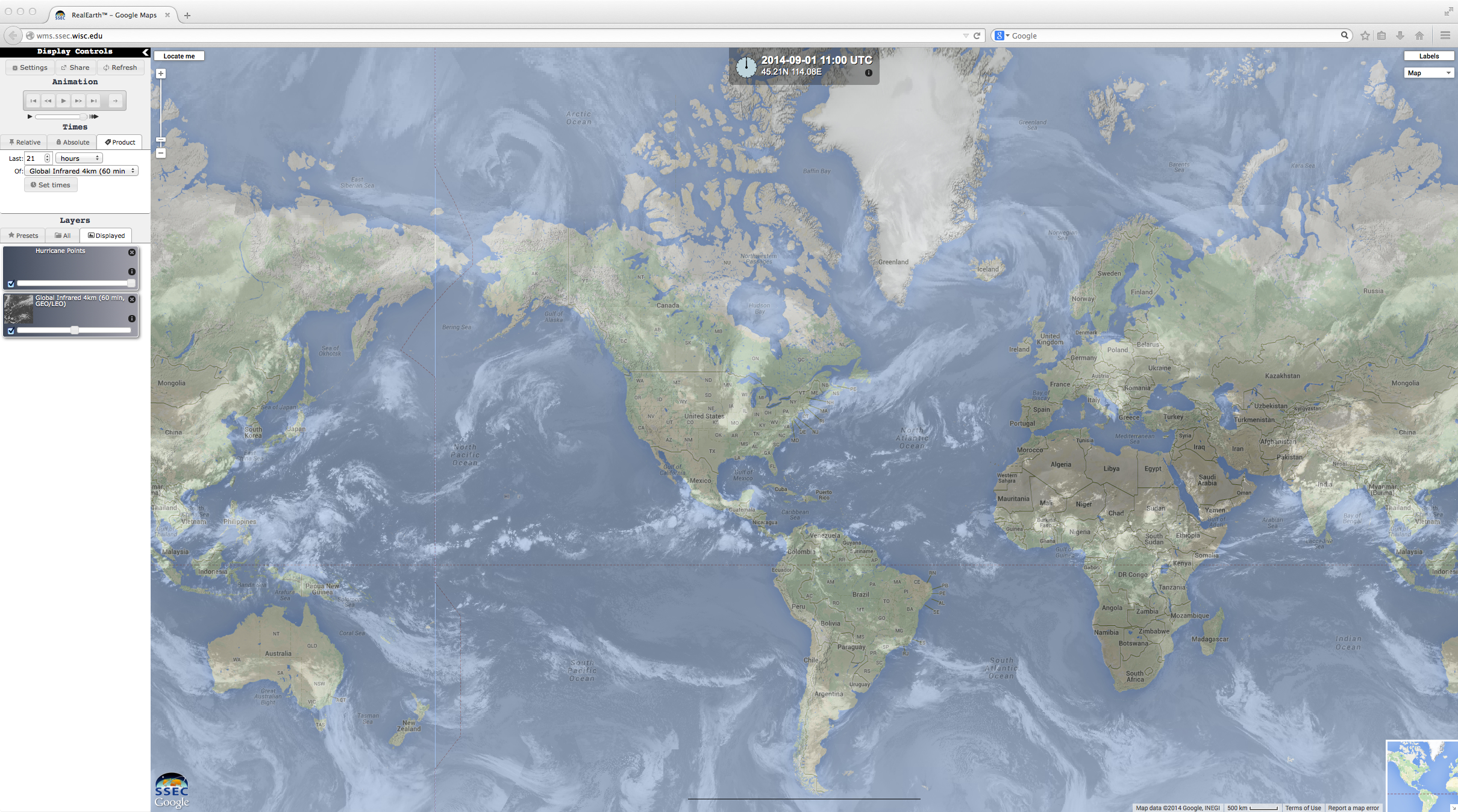After being started by lightning on 11 August, the Happy Camp Fire Complex (Inciweb) continued to burn in far northern California on 03 September 2014. McIDAS images of GOES-15 (GOES-West) 0.63 µm visible channel data (above; click image to play animation) initially revealed the smoke which had settled into the area valleys during the previous night, and then showed a new smoke plume which drifted southwestward off the coast, then turned to the left and moved southward along the adjacent nearshore waters. The smoke moved over Arcata/Eureka airport (KACV), at one point reducing the surface visibility to 6 miles.
As the fie continued to burn into the following night, an AWIPS II image of Suomi NPP VIIRS 3.74 shortwave IR channel data at 10:21 UTC (3:21 AM local time) showed the cluster of fire hot spots (black to yellow to red pixels), while the corresponding VIIRS 0.7 µm Day/Night Band image showed that the bright glow of the fire complex was as large and as intense as that from many of the larger cities in the region.
View only this post Read Less


